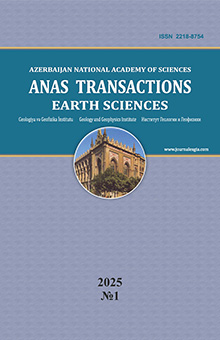№ 3,
2015
Download the article
Active geodynamics of the Caucasus region: implications for earthquake hazards in Azerbaijan
1 – Institute of Geology and Geophysics of Azerbaijan National Academy of Sciences, AZ1143, Baku, H.Javid av., 119
2 – Massachusetts Institute of Technology, Cambridge, USA
Summary
A-
A+
In this paper we present GPS observations of crustal deformation in the Africa-Arabia-Eurasia zone of plate interaction, and use these observations to constrain broad-scale tectonic processes within the collision zone of the Arabian and Eurasian plates. Within this plate tectonics context, we examine deformation of the Caucasus system (Lesser and Greater Caucasus and intervening Caucasian Isthmus) and show that most crustal shortening in the collision zone is accommodated by the Greater Caucasus Fold-and-Thrust Belt (GCFTB) along the southern edge of the Greater Caucasus Mountains. The eastern GCFTB appears to bifurcate west of Baku, with one branch following the accurate geometry of the Greater Caucasus, turning towards the south and traversing the Neftchala Peninsula. A second branch (or branches) may extend directly into the Caspian Sea south of Baku, likely connecting to the Central Caspian Seismic Zone (CCSZ). We model deformation in terms of a locked thrust fault that coincides in general with the main surface trace of the GCFTB. We consider two end-member models, each of which tests the likelihood of one or other of the branches being the dominant cause of observed deformation. Our models indicate that strain is actively accumulating on the fault along the ~200 km segment of the fault west of Baku (approximately between longitudes 47-49°E). Parts of this segment of the fault broke in major earthquakes historically (1191, 1859, 1902) suggesting that significant future earthquakes (M~6-7) are likely on the central and western segment of the fault. We observe a similar deformation pattern across the eastern end of the GCFTB along a profile crossing the Kur Depression and Greater Caucasus Mountains in the vicinity of Baku. Along this eastern segment, a branch of the fault changes from a NW-SE striking thrust to an ~ N-S oriented strike-slip fault (or in multiple splays). The similar deformation pattern along the eastern and central GCFTB segments raises the possibility that major earthquakes may also occur in eastern Azerbaijan. However, the eastern segment of the GCFTB has no record of large historic earthquakes, and is characterized by thick, highly saturated and over-pressured sediments within the Kur Depression and adjacent Caspian Basin that may inhibit elastic strain accumulation in favour of fault creep, and/or distributed faulting and folding. Thus, while our analyses suggest that large earthquakes are likely in central and western Azerbaijan, it is still uncertain whether significant earthquakes are also likely along the eastern segment, and on which structure. Ongoing and future focused studies of active deformation promise to shed further light on the tectonics and earthquake hazards in this highly populated and developed part of Azerbaijan.
